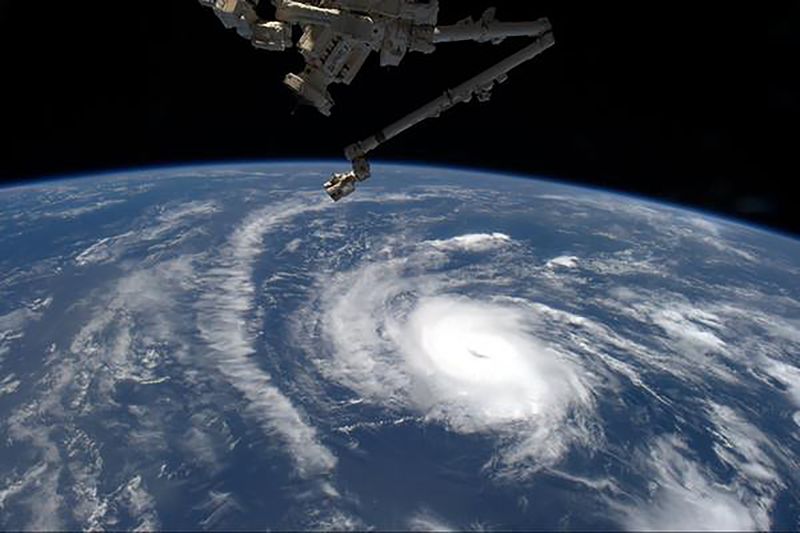(Bloomberg) -- Hurricane Florence’s top winds exploded to 130 miles (209 kilometers) per hour, making it a Category 4 storm, just one-step short of the most severe level as it pushed westward toward the U.S. East Coast.
Florence is a major threat to lives, homes, agriculture and the waning tourist season. It’s currently about 575 miles southeast of Bermuda, the U.S. National Hurricane Center said in an 12 p.m. New York time advisory.
U.S. landfall could come Friday between Charleston, South Carolina and Norfolk, Virginia, the Hurricane Center said. If the strength continue to rise, Florence will be one of just three storms in the records to have winds of 150 miles-per-hour this far north, said Phil Klotzbach, a Colorado State University hurricane researcher. Storms in that part of the ocean usually veer away from the U.S.
“The track that Florence is taking is very atypical,” Klotzbach said in an email. “There’s just a really strong ridge building over the top of Florence that is going to drive it westward and also give it a remarkably favorable environment for strengthening.”
- The governors of South Carolina, North Carolina and Virginia have declared emergencies.
- Mandatory evacuations have begun along North Carolina’s coast.
- Cotton, corn and soybean fields, along with massive hog and poultry facilities lie in Florence’s forecast path.
- Smithfield Foods Inc., the No. 1 hog producer, and chicken producer Sanderson Farms Inc. saw North Carolina operations disrupted in 2016 in flooding from Hurricane Matthew.
“There is an increasing risk of life-threatening impacts from Florence,” the hurricane center has been saying for days.
In 1989, Hurricane Hugo grew to a Category 4 storm before coming ashore near Charleston, South Carolina, where it caused about $14.1 billion in damage when adjusted for inflation, making it the 13th costliest U.S. storm, according to Hurricane Center records. Hugo killed 49 people in the U.S. and across the Caribbean.
Florence could almost double that price tag with total losses reaching $27 billion, said Chuck Watson, a disaster modeler with Enki Research in Savannah, Georgia. It would be the eighth costliest storm in U.S. history.
Some forecasts call for Florence to stall out after it strikes the coast. Still, the storm would produce flooding rains across a large part of the U.S. South, expanding the damage, according to Enki Research’s Watson.
“A big question on this track is how intense the storm remains over the Research Triangle area of North Carolina -- Raleigh-Durham-Chapel Hill,” Watson said.
Further to the east, forecasters are also watching hurricanes Isaac and Helene. While Helene’s outlook calls for it to head into the open Atlantic, Isaac will probably hit the Caribbean’s Lesser Antilles Islands Thursday and potentially brush Puerto Rico, still recovering from last year’s Maria, as a strong tropical storm later.
In the Pacific, Tropical Storm Olivia is set to sweep through the Hawaiian islands Tuesday, where tropical storm watches have been posted. The island state is still recovering from Hurricane Lane, which brought flooding rains to many areas last month.
(Updates strength in first paragraph.)
